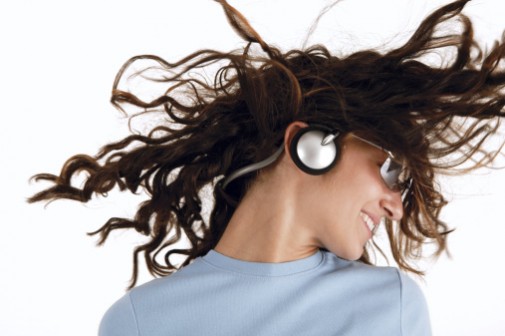A billion teens at risk for hearing loss

You have probably heard the saying “that’s music to my ears.” Well that’s not true to scores of teens who are damaging their ears with loud music, a new report finds.
The World Health Organization (WHO) says 1.1 billion teenagers and young adults are at risk for hearing loss due in part to “unsafe use of personal audio devices, including smartphones, and exposure to damaging levels of sound at noisy entertainment venues such as nightclubs, bars and sporting events.”
WHO’s findings show that the people between the ages of 12 – 35, nearly 50 percent are exposed to unsafe levels of sound from personal audio devices and 40 percent are exposed to potentially damaging sound levels at entertainment venues.
In a typical entertainment venue, the sound is around 100 decibels; however, this is only safe when you are exposed to it for 15 minutes or less.
“As they go about their daily lives doing what they enjoy, more and more young people are placing themselves at risk of hearing loss,” said Dr. Etienne Krug, WHO Director for the Department for Management of Noncommunicable Diseases, in a press release. “They should be aware that once you lose your hearing, it won’t come back. Taking simple preventive actions will allow people to continue to enjoy themselves without putting their hearing at risk.”
The American Academy of Audiology reports that noise can be dangerous if:
- You have to shout over background noise to be heard
- The noise is painful to your ears
- The noise makes your ears ring
- You have decreased or “muffled” hearing for several hours after exposure
So how can teens prevent hearing loss? WHO offers these 4 recommendations:
- Limit time spent engaged in noisy places. If you are in a noisy area take a noise break by moving away from the sound.
- Pay attention to signs of hearing loss. These include ringing in the ears, difficulty hearing high-pitched sounds and having trouble hearing on the telephone.
- Use smartphone apps to monitor the volume of your music.
- Get your hearing checked regularly.
“Some headphones and ear buds are now available with a sound limiting feature which prevents the volume from increasing to potentially harmful levels,” says Georgette Schroeder, an audiologist at Advocate Children’s Hospital in Park Ridge, Ill. She also recommends keeping the volume at less than 75 percent of a device’s maximum volume, but cautions that the volume levels may vary from device to device.
Related Posts
Comments
2 Comments
About the Author
health enews staff is a group of experienced writers from our Advocate Health Care and Aurora Health Care sites, which also includes freelance or intern writers.


















CAN YOU HEAR ME NOW ???
Darn kids and thier rock’n’roll!
You’ll shoot your eye out!